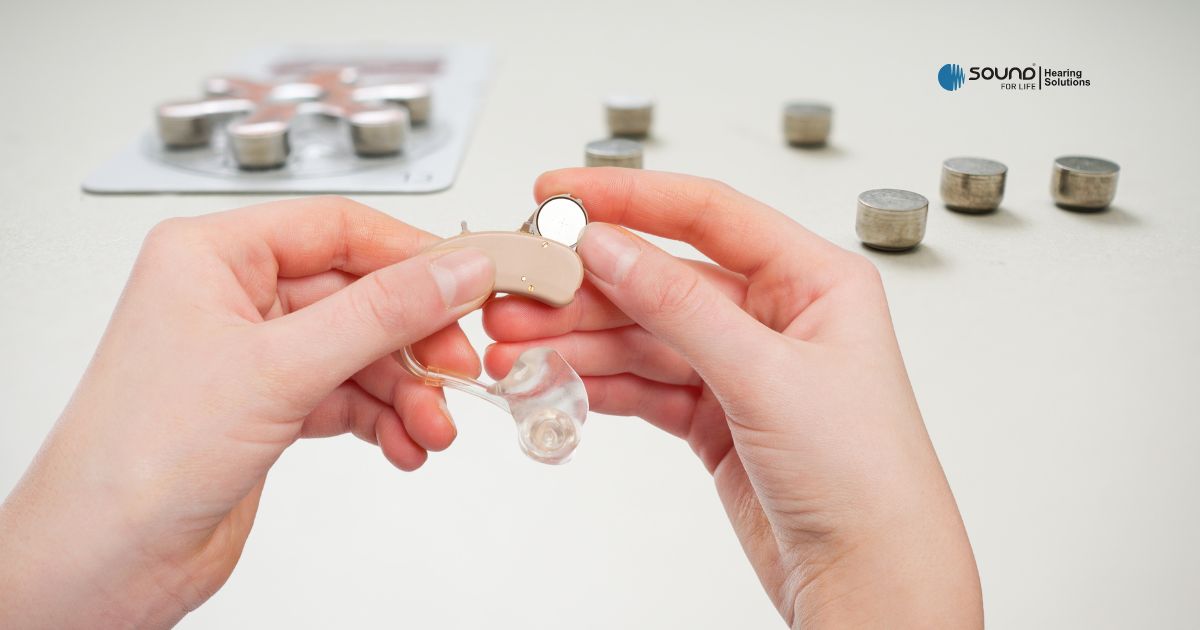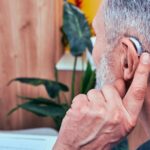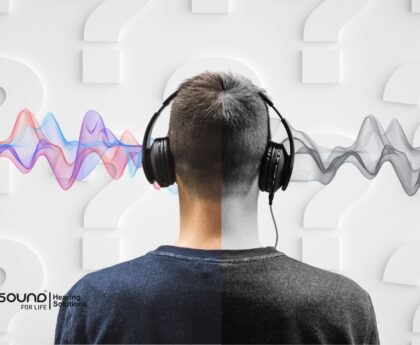In India, hearing aids are life-changing for many people, especially older adults and young individuals with hearing loss. About 63 million people in India alone have a serious hearing loss. These users need batteries that they can count on. This guide has all the information you need about hearing aid batteries in India, such as the different types and sizes, how long they should last, and where to buy them (including SFL Hearing Solutions’ online store, which has a 50% off deal).
Types of Hearing Aid Batteries
There are two main categories of batteries used in hearing aids:
- Disposable (Zinc-Air) Batteries: Disposable zinc-air batteries are the small button cells commonly used in many traditional hearing aids. They switch on when you remove the sealed tab: after you peel off the sticker and insert the cell, allow about a minute for it to reach full power. Zinc-air chemistry is stable, and when batteries remain sealed and stored at room temperature they can keep usable life for up to three years. Do not refrigerate them, moisture can damage performance and reduce lifespan. Modern zinc-air hearing-aid batteries are manufactured without mercury, which is better for both users and the environment. When a battery is spent, don’t throw it in household rubbish; dispose of it as electronic waste through proper collection points or recycling centres near you today so harmful materials are handled responsibly.
- Rechargeable Batteries: More and more new hearing aids come with built-in lithium-ion batteries that charge overnight, just like your phone. Rechargeable aids are easy to use because you just dock them every day. You don’t have to change the batteries all the time. But not all models use batteries that can be recharged. Many strong or “stocky” hearing aids, especially those for people with severe hearing loss, still use zinc-air batteries that can be thrown away. You will need to buy new batteries if your hearing aid doesn’t come with a charger. Always read the manual for your device or ask your audiologist which type you need. Using the wrong kind can break the aid.
Common Battery Sizes and Colors
Hearing aid batteries come in four standard sizes (plus some specialty cells for implants). Each size is color-coded for easy recognition:
- Size 10 (Yellow tab): The smallest. Used in very small In-the-Canal (CIC) and In-the-Ear (ITE) hearing aids. (Dimensions ~5.8 × 3.6 mm.) These tiny yellow-tab batteries typically last about 3–7 days on a full day’s use.
- Size 312 (Brown tab): Slightly larger. Common in Receiver-in-Canal (RIC) and some ITE aids, especially those with Bluetooth or streaming features. (Dimensions ~7.9 × 3.6 mm.) Brown-tab batteries last roughly 3–10 days under normal usage.
- Size 13 (Orange tab): Medium-large. Used in many Behind-the-Ear (BTE) aids. (Dimensions ~7.9 × 5.4 mm.) The orange-tab size-13 cells power a typical BTE aid for about 6–14 days per fresh battery.
- Size 675 (Blue tab): The largest standard button cell. Used in high-power BTE aids and cochlear implants (blue tab; special implant-size 675 has gray tab). (Dimensions ~11.6 × 5.4 mm.) Blue-tab size-675 batteries can last 9–20 days on a charge. The high-drain Cochlear Implant Plus (CI) cell (also called 675HP) is even more powerful for implants.
The Duracell Activair EasyTab hearing aid battery packs (Size 13 – orange tab) don’t have any mercury in them and have extra-long pull-tabs to make them easier to use. Duracell says that unopened packs will last for more than four years.
You can easily find the right size by looking at the IEC and ANSI colour codes above. For instance, the orange label on the Duracell EasyTab Size 13 battery in the picture above matches the international colour code. Always get the right size for your hearing aid; using the wrong size can block the compartment. If you’re not sure about the size, look in the manual for your aid or bring an old battery to a store. They can show you the matching colour tab.
Battery Lifespan (How Long They Last)
Battery life varies by size and usage. As a rule, smaller batteries (Sizes 10 and 312) drain faster than larger ones (13 and 675). On an average 16-hour use day, Healthy Hearing reports approximate lifespans:
- Size 10 (Yellow): ~3–7 days
- Size 312 (Brown): ~3–10 days
- Size 13 (Orange): ~6–14 days
- Size 675 (Blue): ~9–20 days
(Your mileage may vary: things like using Bluetooth streaming, adjusting the volume or gain on your hearing aid, or being in a very loud place can make it last less long. If your batteries die much sooner than you thought they would, talk to your audiologist about the device or settings.)
Here are some tips to extend each battery’s life:
- Activate Properly: When you put in a new zinc-air battery, take off the sticker and wait about a minute before closing the battery door. This makes sure that all of the oxygen is used up for the best power.
- When you’re not using them, turn them off: Take off your hearing aids (or open the battery door) when you’re not using them, especially at night. This stops power from being wasted. In fact, leaving the compartment door open helps any moisture from the day evaporate, which also helps the battery last longer.
- Keep spare batteries at room temperature and in a dry place: Stay away from hot or humid places, like bathrooms, because they can make zinc-air cells weaker. Don’t keep loose batteries next to coins or keys because touching metal can short a battery. You don’t have to put them in the fridge.
- Check Expiry Date: Batteries lose power as they get older. Always buy new packs from sellers you can trust. Use batteries immediately after opening once activated they begin to lose charge, even if left installed in your hearing aid.
- Use Battery Testers: There are small battery testers for hearing aids that you can use when you really need to, like when you travel. These help you check that a battery is good before putting it in your aid.
Most users squeeze every last hour of battery life by following a few simple habit. Always be ready for emergencies by keeping an extra pack on hand. If you run out of power unexpectedly, you won’t be able to hear.
Popular Hearing Aid Battery Brands
In India, Duracell, Power One, Rayovac, and Signia are the top brands sold by audiology clinics and retailers. Each has strengths for different users:
- Duracell (Activair/EasyTab): A well-known brand that makes batteries that last. The EasyTab line from Duracell has extra-long pull-tabs and light packaging that makes it easy to use. For instance, the Size 13 Duracell Activair (orange tab) is designed for Behind-The-Ear aids and can last for more than four years on the shelf. These batteries don’t contain any mercury and are made to hold a charge for a long time. (SFL is selling Size-13 Duracell 6-packs for half off.)
- Power One (VARTA): High-quality zinc-air batteries made in Germany. Before they leave the factory, every Power One cell is tested 100%. They come in “comfort” packaging and are made to last without rusting. Power One batteries have tabs that are longer than normal, making them easy to put in and take out. Audiologists often recommend the Size-10 Power One (yellow tab) because it lasts a long time and doesn’t contain mercury. It’s great for small aids that go in the canal. SFL has all the Power One sizes (P10, P13, P312, and P675). For example, a 6-pack of P10 is on sale for ₹120, which is 50% off.
- Rayovac (Extra Advanced): A well-known brand of hearing batteries that focuses on advanced chemistry. Rayovac’s “Extra Advanced” zinc-air batteries use a special Active Core design to fit more active material into the cell. Rayovac has changed the design of its cells to make them hold more power and be more reliable. For instance, Size 13 Rayovac batteries (with an orange tab) are made to last longer and provide steady power in all situations. Rayovac cells are zinc-air, like the others, and can last for up to three years if they are sealed. They don’t have any mercury in them. They often come in small multipacks; for example, a six-pack of Size 13 batteries shows the distinctive orange tabs and retail packaging.
The Rayovac Extra Advanced hearing aid battery pack (Size 13, orange tab) uses the Active Core battery design to store as much energy as possible. These zinc-air batteries don’t go bad for years if you don’t open them, and they don’t have any mercury in them.
- Signia (formerly Siemens): Signia makes a lot of hearing aids and also sells its own brand of zinc-air batteries. These Signia batteries are made to work with high-performance, wireless hearing aids. Signia batteries use the same colour codes as the others. Sources in the industry say that Signia batteries are rated for “long life, even in powerful instruments.” Users say that Signia cells work just as well as the big brands listed above. SFL also sells Signia batteries. For example, a 6-pack of Size-675 Signia batteries is on sale for ₹120.
The chemistry in all of these brands is the same (zinc-air), so the differences in how well they work are usually small. Stick with well-known brands that audiologists recommend (as listed above) for extra peace of mind. Indian ENT professionals have officially approved all of the brands that SFL sells.
Where to Buy Batteries for Hearing Aids in India
- Hearing-aid batteries can be bought from many places across India — especially at hearing clinics and from audiologists. These clinics usually have fresh stock and will be able to quickly check which size fits your device. Some clinics also run battery clubs or subscription plans that give discounts and deliver batteries to your home, which makes reordering easy, affordable and convenient.
- Pharmacies & Retail Stores: Major pharmacies, supermarkets, and electronics stores all sell hearing aid batteries. You can buy Duracell and Rayovac batteries at stores like Apollo Pharmacy, Croma, and big department stores. (But make sure to check the date on the packaging, because batteries on store shelves can sometimes be older stock.)
- Online Stores: A lot of people buy hearing aid batteries online. Many brands and pack sizes are available on sites like Amazon.in and Flipkart. SFL Hearing Solutions (shop.soundforlife.in) is an online store that only sells batteries of all sizes (10, 13, 312, 675, and implant cells) from well-known brands like Power One, Duracell, Rayovac, and Signia. SFL is having a big sale right now, with many 6-packs on sale for half off (now ₹120 instead of ₹240). They ship all over the country within 24 hours and promise that their stock is real and fresh. If you need more than one, you can get a bulk discount.
- Specialty Battery Shops: In some cities, there are stores that only sell batteries, and they also sell hearing aid batteries. These stores usually have a lot of choices and helpful staff. Always make sure you’re getting the right colour tab for your device.
In short, pick a source you can trust. Talk to your hearing care provider if you’re not sure where to buy. They can often get batteries for you, and sometimes they don’t even charge you extra. Online ordering, like through SFL’s site, is convenient, but make sure you check the seller’s legitimacy (buy from authorised sellers). Freshness is important: zinc-air batteries lose power even when not in use, so newer stock lasts longer when you use them.
Battery Safety and Disposal
Hearing-aid batteries are safe when used correctly and handle them carefully.
- Keep Away from Kids and Pets: Because button batteries are tiny and can be swallowed, make sure they are out of children’s and dogs’ reach. Mercury is not present in modern batteries, however it is still deadly to swallow any battery. Seek immediate medical attention if someone consumes a battery.
- Disposal/Recycle: Hearing aid batteries should be recycled as electronic waste (EWaste) if at all possible, even though they don’t contain mercury. A lot of clinics or towns have places where you can drop off EWaste. Don’t ever throw batteries in the trash. Most brands now clearly mark their cells with “Hg 0%” to show that they don’t contain mercury.
- Don’t Use Expired Batteries: Don’t use expired batteries, always check the manufacture or expiry date before you put one in. Old or drained batteries may not hold a charge, give poor sound, or even leak and corrode your hearing aid. To protect your device, use fresh batteries, store unopened packs at room temperature, and safely discard any cells past their date.
By following simple safety rules you protect not only your hearing aid but also your family, pets, and the environment. Always dispose of your used batteries properly. While disposing them properly keeps dangerous materials out of soil and water, safe handling helps to avoid mishaps. Every small step you take contributes towards creating a safer, cleaner environment.
Take the Next Step
The right hearing-aid batteries can make all the difference, helping you hear clearly, comfortably, and with confidence every day. Understanding the different battery types, sizes, and best usage practices not only keeps your device working at its best but can also save you money and prevent unnecessary problems whether you use a tiny in-ear model or a larger behind-the-ear (BTE) hearing aid.
Ready to shop? Explore our complete range of hearing-aid batteries at shop.soundforlife.in. We stock trusted brands like Duracell, Power One, Rayovac, Signia, and more. Right now, many convenient 6-pack batteries are available at 50% off. Not sure which battery suits your device? Our friendly experts are here to guide you and make sure you choose the perfect match. To increase the power of your hearing aid, replace the batteries with fresh, high-quality ones. Look into the options today, and you’ll never miss a beat!





